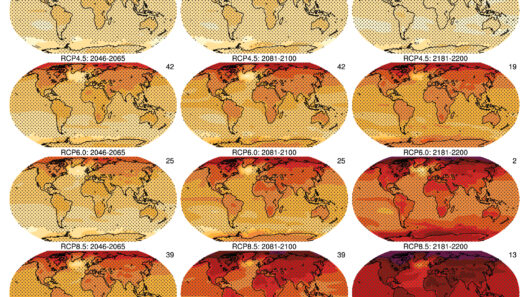Japan, an archipelago draped in intricacies, presents a climate that is as multifaceted as its cultural tapestry. Enveloped by the Pacific Ocean, the nation’s diverse weather patterns reflect the geographical nuances of its islands. From the frigid northern reaches of Hokkaido to the subtropical warmth of Okinawa, Japan’s climate is a kaleidoscope that beckons exploration and understanding.
The Japanese archipelago is subject to a range of climatic influences, particularly the continental, maritime, and tropical systems, which harmonize to create distinct regional climates. These variations provide a unique vignette of Japan’s environment, offering myriad experiences throughout the year.
Winter, lasting roughly from December to February, is a season that casts a white blanket over much of the nation. The northern and mountainous regions, particularly Hokkaido and the Japanese Alps, revel in abundant snowfall. This period transforms these areas into winter wonderlands, where powdery snow coats ancient forests like sugar dust on a cake, inviting skiers and snow enthusiasts to its slopes. Simultaneously, the southern parts of Japan experience milder conditions, showcasing a more temperate winter with cooler, crisp air, ideal for enjoying seasonal foods and festivals.
As spring unfurls its petals from March to May, the climate embarks on a transformative journey. Cherry blossoms—the iconic sakura—bloom in a spectacle of pink hues, attracting those who seek to partake in hanami parties, where people gather under blooming trees. The beauty of this season is ephemeral, yet intoxicating, akin to a fleeting fragrance that lingers in the air. Spring in Japan heralds not only the arrival of warmer temperatures but also serves as a reminder of nature’s transitory beauty. This period of rebirth is celebrated nationwide, signifying renewal and the awakening of life after the dormancy of winter.
Summer, which stretches from June to August, contrasts sharply with the previous seasons. The air becomes thick with humidity, the kind that envelops you like a warm embrace, often coupled with sultry temperatures. Torrential rains may grace the landscape during the rainy season, providing sustenance to the verdant flora that characterizes Japan’s scenery. This time of abundance elements contrasts with the arid heat felt in urban areas, where the buildings seem to absorb the sun’s rays, radiating warmth that percolates through the streets. Festivals during this season take on a carnival-like atmosphere, as fireworks illuminate night skies like ethereal brushstrokes on a dark canvas.
Autumn, spanning September to November, is a stunning mosaic of color that transforms Japan’s landscape into a picturesque panorama. The foliage transitions into fiery reds, vibrant oranges, and golden yellows, akin to a painter meticulously crafting a masterpiece. The temperate climate of this season is often regarded as the most pleasant, with cool breezes that beckon outdoor exploration. Hikes through national parks to witness the koyo—autumn leaves—become a pilgrimage for many, as the foliage displays an iridescent glory before the hush of winter returns.
Unique to Japan is its vulnerability to natural disasters, particularly typhoons and earthquakes. The summer months may usher in typhoons, which can impact weather patterns dramatically, bringing tempestuous winds and heavy rains that can affect communities profoundly. These storms serve as a stark reminder of nature’s might and the necessity for preparedness and resilience. In contrast, seismic activity beneath Japan’s surface manifests unpredictably, challenging the synchronicity between human life and the earth’s volatility.
Moreover, Japan’s topography significantly influences climatic variations. The Japanese archipelago is characterized by a central mountainous spine, which acts as a natural barrier to prevailing winds. This phenomenon creates distinct microclimates across regions, with the western coasts receiving heavy precipitation while the eastern side may bask in drier conditions. This geographical dichotomy not only shapes the climate but also influences agriculture and biodiversity, allowing different regions to cultivate a diverse array of crops.
In recent years, Japan has grappled with the implications of climate change, as rising temperatures and unpredictable weather patterns pose challenges to ecosystems and livelihoods. The seasonal rhythms that have governed Japanese life for centuries are showing signs of disarray, leading to concerns about food security and the preservation of cultural heritage related to seasonal festivities. Thus, understanding the climate of Japan transcends a mere inquiry into weather; it becomes an essential look into how communities adapt to ever-evolving environmental changes.
In conclusion, the climate of Japan is emblematic of a continuing dialogue between nature and humanity. It invites its inhabitants and visitors alike to reflect on the ephemeral beauty that each season brings while acknowledging the profound impact of climate variability. By embracing this intricate relationship, we forge a path toward a more informed and sustainable future, one that honors the delicate interplay between culture and environment. Japan’s climate, experienced through its dynamic cycles, serves as an invitation for deeper appreciation, a call to action, and a reminder of the interconnected tapestry that is our natural world.



